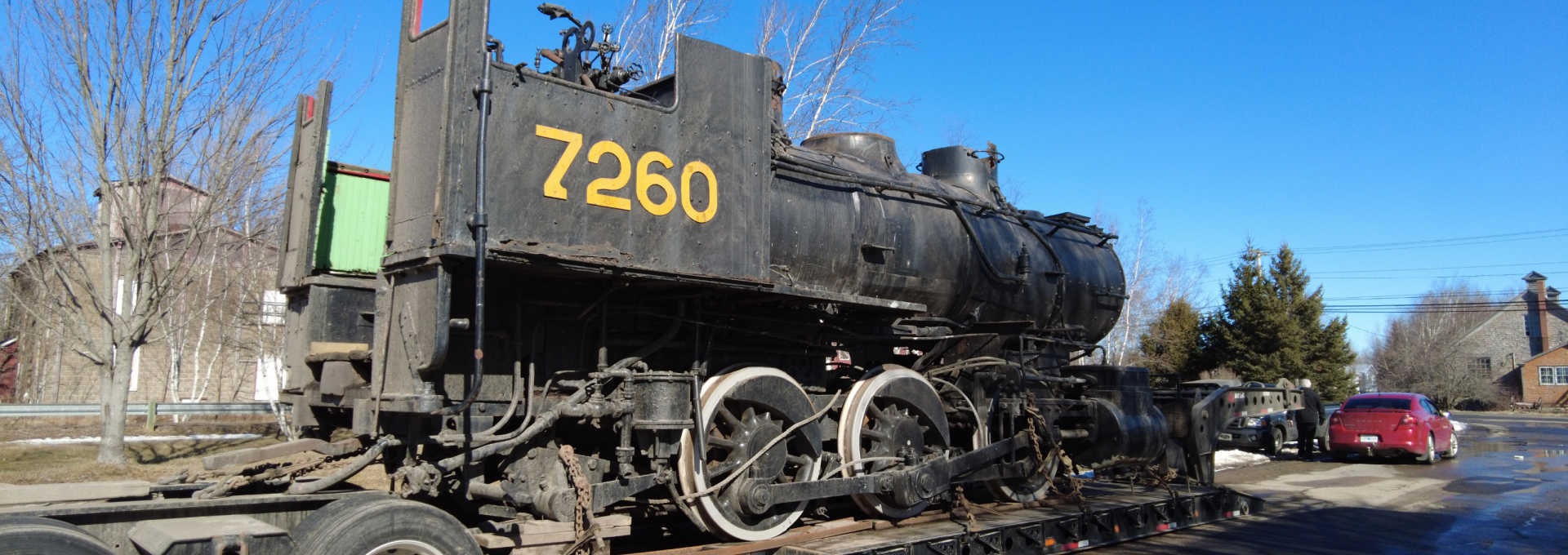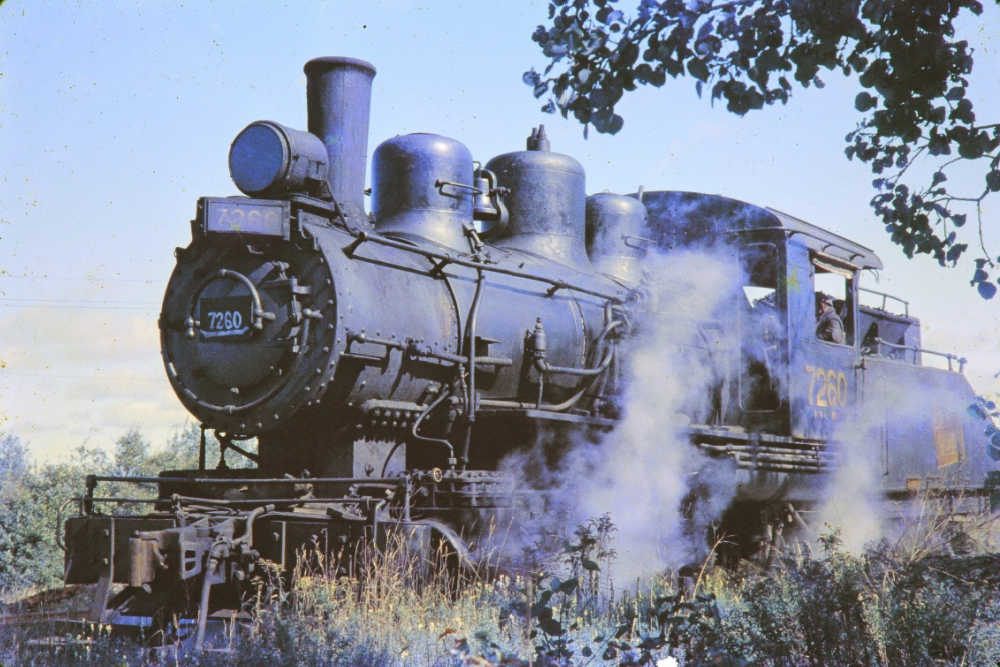
6 Wheeler (0-6-0) CNR 7260
The little engine that did is coming to Middleton! Steam locomotive 7260 is returning to the Canadian National Railways line that linked Lunenburg and Bridgewater to Middleton and Port Wade. The locomotive is a gift from the Nova Scotia Museum of Industry in Stellarton.
7260 has a strong local pedigree as it served as a switching engine, numbered 7075, in Bridgewater in the 1940s. It would have assembled the Mixed Train of freight and passenger cars that left Bridgewater for a return trip to Middleton daily except Sunday. On Wednesdays, the train made an additional side trip to Bridgetown. A locomotive like our 4-6-0 CNR 1274 would have led the train from Bridgewater.
The 7260 is the oldest locomotive built by the Canadian Locomotive Company in Kingston, Ontario, that still exists. By a wide margin, the firm was Canada’s second-largest builder of steam locomotives. The 104-ton steamer was built in November 1906 for the Intercolonial Railway of Canada, later a part of the CNR, that linked the Maritimes with Montreal. It is only a year younger than our existing engine, 1274, which also served the CNR. The steamer was one of the first fifteen switchers of the 0-6-0 wheel arrangement ordered by the Intercolonial. Our engine previously served in Pictou, Truro, Bridgewater and probably elsewhere in the Maritimes.

Photo by unknown, Middleton Railway Archives
On January 15, 1953, CNR sold the little, 7260 for $3,500 to the Intercolonial Coal Company to work at their colliery in Westville, Nova Scotia. It ran there until about 1962. By then, it had become one of the last steam engines operating in Nova Scotia. Local entrepreneur Robert Tibbetts acquired the locomotive in 1964 from the Drummond Coal Company and placed it on display at his paint manufacturing company in Trenton. Tibbetts donated the locomotive to the Museum of Industry on September 14, 1991, and she has remained there until now.
The 33,000-pound tender is remarkable as its sloped back style made it easier for engine crews to see operating hand signals from on-the-ground employees. The site advantage while switching back and forth was offset by reduced water capacity, so the design never caught on in Canada. Our new tender is the last one remaining that had served the CNR and is just one of a few surviving in Canada. As the original tender was not of this style but was evident in a 1940 photograph, it will be examined closely as it may have been rebuilt or, more likely, come from another locomotive.
The two locomotives currently sit side by side, where visitors to the Middleton Railway Museum can see similarities in their bronze number plates, bells, and steam dome. At the same time, they will note that 7260 has an original steel cab that initially bore the number 100, while 1274 has our handmade replica of its never-updated wooden cab. The 7260 has a conventional firebox, while our 1274 has the rare, extra-cost, high-efficiency Belpaire design.
Header Photo by Lee Hopkins

